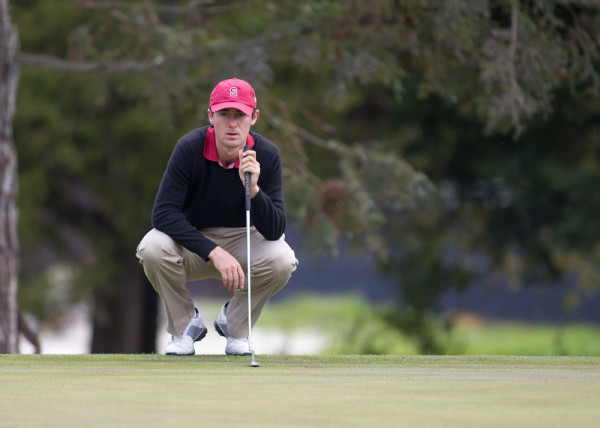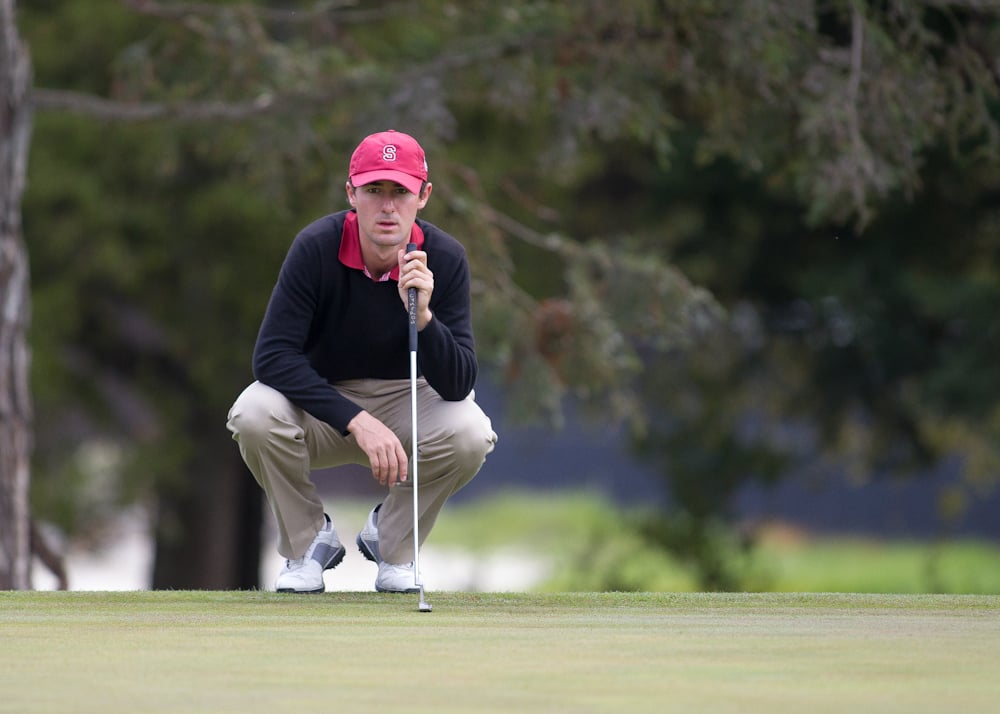Facing its first score-low-or-go-home test of the season, the No. 10 Stanford men’s golf team begins play at the NCAA Columbus Regional today looking to advance to the national championship tournament for the second straight year.

The field, which Cardinal head coach Conrad Ray characterized as “very competitive,” includes No. 5 New Mexico, No. 19 Auburn, No. 22 South Carolina, UNLV, Missouri, Texas Tech and Chattanooga. In addition, the event features eight of the country’s top-50 individuals. The top five teams plus the lowest-scoring individual not on those teams will advance to the NCAA Championships on May 28-June 2 in Atlanta, Ga.
The Cardinal will be looking to get off the ground quickly and start better than it did at the Pac-12 Championships a few weeks ago, when the team found itself in sixth place after 18 holes.
Course familiarity won’t be a huge issue for the Cardinal, as the team’s top three players—senior Andrew Yun, junior Cameron Wilson and sophomore Patrick Rodgers—have all played on the Ohio State Scarlet Course, which will host the regional.
“The keys to playing well on that course are good driving and lag putting,” said Yun, who said he played the course as junior in high school as well as the past two years for a Nationwide Tour event.
“If you can find the fairways, you can be really aggressive to any pin location on the greens, Yun continued. “That said, the greens are very large and undulating. If you miss an iron shot, you will most likely find the green, but have a lengthy putt. If you can lag your putts well, then you can minimize your mistakes.”
Ray concurred, adding that he had talked to the Ohio State women’s golf coach at the women’s NCAA West Regional about the condition of the course the team will face.
“She said that the rough was up and the greens were fast, and so it’ll be a good test of golf,” Ray said. “I like the fact that this course is a little bit harder than some of the other regional sites. It provides some separation in scoring, and our guys seem to play decently well on more challenging courses. So we’re looking forward to that.”
Wilson—who has won a junior event on the OSU Scarlet Course—will certainly be looking to continue his solid play from the recent Pac-12 tournament where he finished ninth for his first ever top-10 finish at the conference championships.
In the junior’s two previous regional appearances, Stanford has landed on both sides of the coin, falling short in 2011 but advancing to NCAAs last year. With both experiences under his belt, Wilson knows that pressing too hard in what could be a season-ending tournament isn’t beneficial.
“I don’t think we’ll treat this differently than our other events,” Wilson said of the regional. “We’ve been finishing in the top five for most of the season against fields that are a little deeper than this one. If we keep the same attitude and mindset I like our chances to advance.”
If the team is to vie for the win in Columbus, both Rodgers and Yun will need bounce-back tournaments after disappointing Pac-12 showings. After placing eighth in the Pac-12 tournament his freshman year in 2011, Rodgers wasn’t able to replicate that top-10 performance down at L.A. Country Club, finishing 11th. But the No. 6 ranked collegiate golfer in the nation is still dangerous, and is confident that the regional will be an entirely different story.
“I had a disappointing last few days after getting off to a nice start in Pac-12’s but that’s the nature of golf and it’s going to happen,” Rodgers commented. “I was well-prepared for the event and just didn’t have my best stuff come tournament time. This time, my game is again right where it needs to be and if I can stay disciplined mentally throughout the event and control my golf ball, the result will be in my and the team’s favor.”
Yun, the 2012 Pac-12 individual champion, endured a rough title defense campaign in southern California, tying for 29th. Even though the regional could be his final collegiate tournament, the ‘Iceman’ has seemingly rubber-skin that even the most disheartening of performances can’t permeate.
“You have disappointing performances and good performances,” Yun said. “Every day, every round, and every shot is a new beginning. What a great golfer does is learn from their mistakes and maintain their confidence/belief in themselves. It is easy to lose confidence with a bad tournament, but I’m confident in both my ability and in my preparation so I believe that my best golf lies ahead.”
Contact Cameron Miller at cmiller6 ‘at’ stanford.edu.
